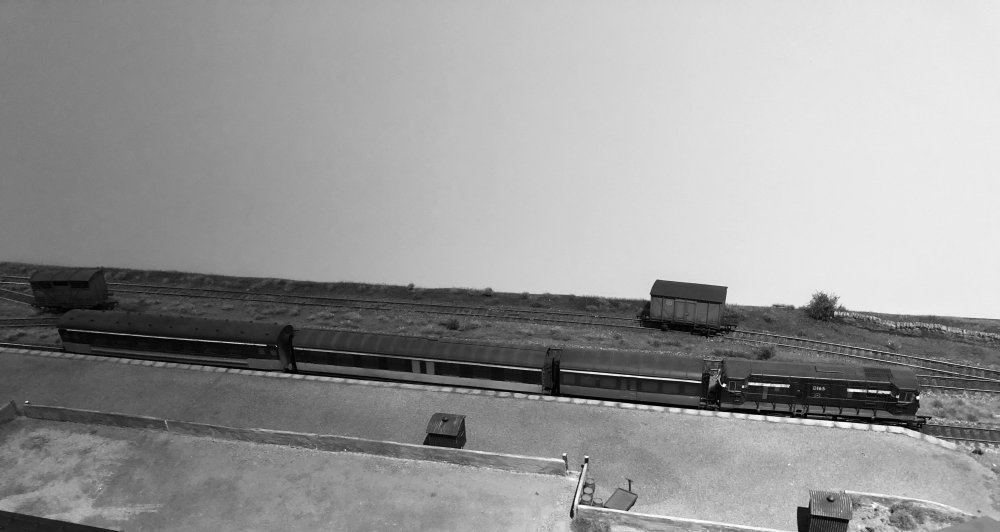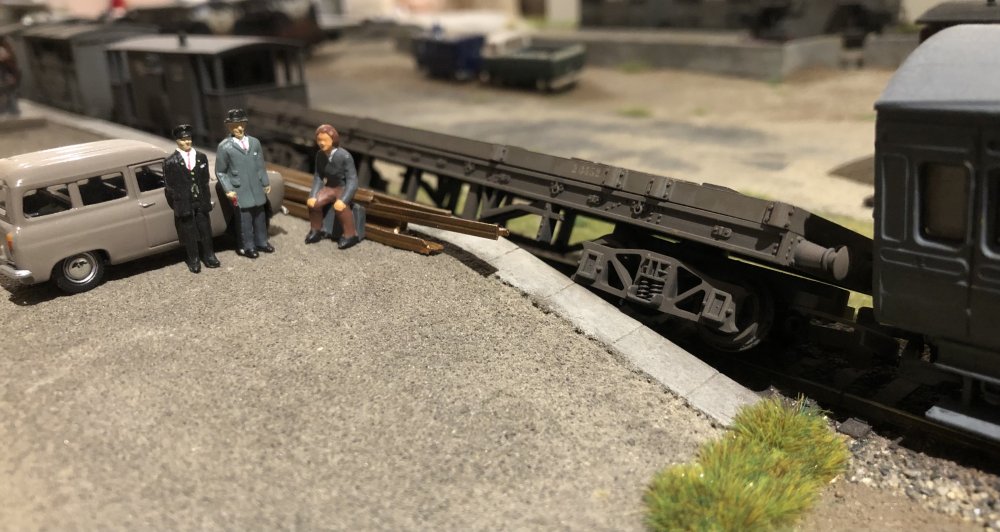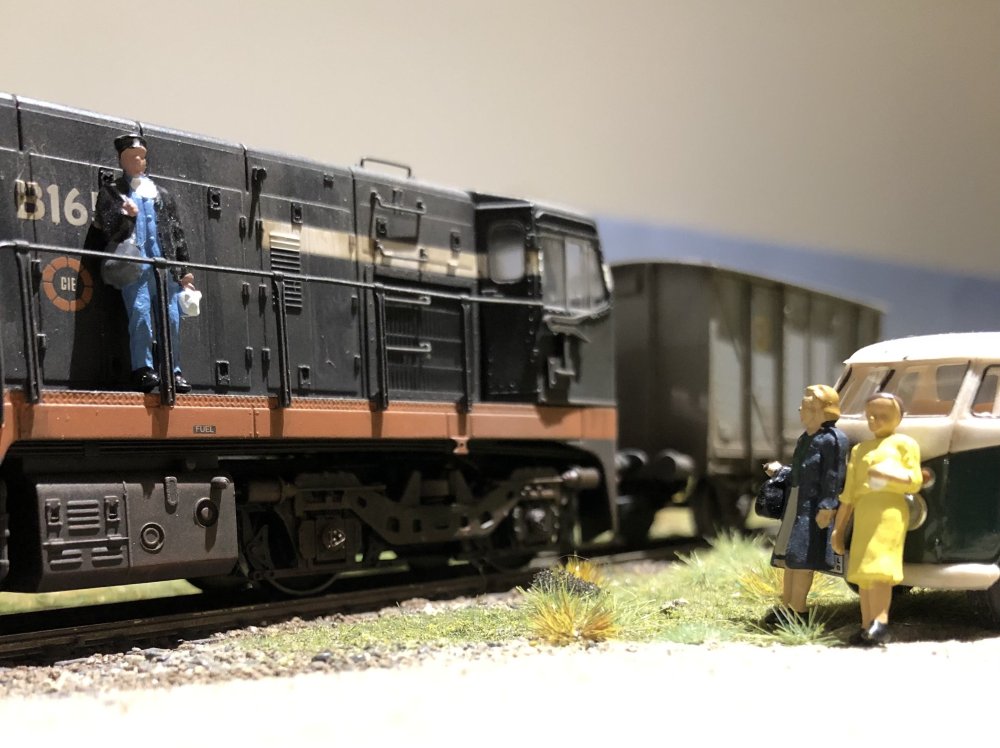-
Posts
15,831 -
Joined
-
Last visited
-
Days Won
393
Content Type
Profiles
Forums
Events
Gallery
Blogs
Store
Community Map
Everything posted by jhb171achill
-
Yup Brand new, straight out of stores, never used.
-
Update here; Headhunters Railway Museum in Enniskillen has a number of very clean GSR enamels from (or for) doors - bilingual “Waiting Room”, “Gentlemen” etc.
-
That cattle wagon - yes! Only seeing that now myself.... sure the track down there hasn't been properly relaid since long before oul Johnny Mac retired,,,,
-
Irish rail tease an interesting announcement
jhb171achill replied to Westcorkrailway's topic in News
80 year anniversary indeed - maybe something with a flying snail on it! -
Irish rail tease an interesting announcement
jhb171achill replied to Westcorkrailway's topic in News
CIE 1950s green please! -
Ah - that famous Egypt, Bunclody & Singapore Railway, who had those unique 0.7.0s…..
-
And that was 24 years ago!
-
In the 1950s and 60s, I recall meeting several English gentlemen in the west of Ireland who had retired there in twilight years. Some of these had been involved in the Second World War - recall one with a very grand accent and handlebar moustache. He had been an RAF pilot, who boasted in very un-PC terms about the people he had dropped bombs on…. In reality, people like this often privately flew for enjoyment well into their older years. Here we see a picture taken by former Wing Commander Sir Tarquin Smythe-Plumley-Chumley (7th Marquis of Castletown) from his Cessna 3-seater in summer 1966, as the 11:40 local leaves Dugort Harbour…..
-
Irish Railway PW wagon livery in the 1950 to 1960
jhb171achill replied to Colin R's topic in General Chat
Plain wagon grey at that stage. With extremely few exceptions, departmental stock at that time was standard wagon grey. The running number would typically end in “A”, thus 456A or 207A on the side, in standard wagon-style font. Chassis same colour as wagon; if it was a crew coach, same plain grey (green with red ends later on), but with dark grey / black roof. Flying Snails sometimes painted, usually stencilled, in white. After 1963, roundels which could variously be all-white or tan surround. Many or most wagons had “PWD” stencilled on sides. Steam cranes either wagon grey or black. -
-
“Did you get the eggs?” ”Yeah, they’re up here with me - want a lift into town?” ”What time will you be back?” “I’ve only to bring this van up, coming back light. Sure ye can hop up here, and Margaret can come too…” ”OK, get down and give me a hand liftin’ the messages up….”
-
Irish Railway News ‘Enterprise Watch’
jhb171achill replied to IrishTrainScenes's topic in General Chat
09:30, methinks. Ye on it? -
Irish Railway News ‘Enterprise Watch’
jhb171achill replied to IrishTrainScenes's topic in General Chat
I’m off to Belfast to meet cronies in the morning. Prob my last time in GVS, as I’ll be getting off the Enterprise in Portydown and getting a local to GVS….. -
Achill D16, for the DCDR, with coal bill paid by me in perpetuity.
-
Exactly - it’s beyond help now.
-
Indeed. I know the owner of the hotel. His initial idea was to restore and convert it into a coffee shop overflow seating area, having it parked at the platform beside the bar / cafe. However, this fell foul of catering / health and safety matters, so he had to abandon it. I discussed the implications of restoring it at the time - this is (at a wild guess) fifteen years ago or more. Even then, it was in very ropey condition. This gentleman is a very, very busy man indeed - he runs not just this hotel but another very large local company as well. I would imagine that this vehicle is extremely low on his priority list, as he has now no likely use for it. Having now spent over sixty years in the open, in Irish weather, we can all guess as to its state. We need not lament its fate. Whitehead has an identical one, as does Downpatrick. All require a rebuild, though the Whitehead one is marginally more stable than the others. Downpatrick also has a 2nd class version of the same. Thus, if the tooth fairy ever brought the necessary cash, a three coach MGWR train of six-wheelers could be assembled; Downpatrick would seem to be the only suitable place - and there, it could join two BCDR six-wheelers, one GNR one and one GSWR one! I have just revealed my "Carriage Project", to commence when I win the Euromillions - because, in truth, that's precisely what I would do with a fair chunk of the loot................
-
Just occurs to me..... obviously this thing is grey, as everything was then (black is always wrong for these as none lasted to the 1950s); but somewhere in the cobweb of my mind is a notion - possibly driven by a photo showing faded lined transfer lettering - suggesting that the dark coach maroon might have appeared on one anyway....very highly unlikely, but I wonder did anyone else have any thoughts on this....
-
Exactly, as are the two at Downpatrick. The one at Whitehead, 62M, is also in a very sorry state.
-
It is. It’s quite beyond hope now - a complete rebuild would be necessary.
-
The more guinness, the more emissions......
-
Well, I'm developing a pot belly - does that help? The new-build "Sir Henry" will need to be steam-tested by the weekend after next.........
-
Clogherhead - A GNR(I) Seaside Terminus
jhb171achill replied to Patrick Davey's topic in Irish Model Layouts
I can smell the sea air, cresote on sleepers, and a faint whiff of coal smoke from the UG which has just left with the Dundalk local....... and is that a smell of fish'n'chips from that beaten-up oul van parked up beside the beach, down the road? Mind those seagulls, by the way. -
Yes, they are. Some future releases of these vehicles, which had not been finalised at the time Hattons closed, have been abandoned, but the CIE liveries were amongst the batch to go ahead. So they will appear. Latest info suggests later this year. Sadly, the GSR maroon one which was in discussion will not appear, but both green liveries plus the blackntan full brake will. It's 59 years this month since six-wheeled coaches were used in traffic, the very last use being in the Cork area, almost certainly on Youghal excursions. Cork had the distinction of having the last ones still in traffic, by that stage mostly of ex-MGWR origin, but the full brakes tended to be of ex-GSWR origin, and as non-passenger vehicles, half a dozen of them remained in use tagged onto the ends of passenger trains carrying parcels and mails, until various dates between 1965 and 1970. Two officially survived until 1970 in traffic, but I've seen a picture of one of these (in black'n'tan) taken in, I think, 1969, and it was clear that while still technically on the books it had not been in use for some time. The latest date I've seen a picture of one actually in a train was in the consist of a Galway mail train in 1968. Ennnnyway; Rails of Sheffield will be shipping them out, and I am told that orders placed with hattons will be fulfilled by them. I certainly hope so, as several examples are sold out on pre-order and I want one of each. In a pre-1963 rural train, the contrast between a modern Park Royal or laminate, and one of these elderly survivors, was immense - I'm looking forward to being able to replicate this in model form. Six wheel first, Park Royal and tin van, behid a J15 one day, and a C or an A the next; perfect. Just sorry I never actually travelled in one.
-
Well done, Oisín, enjoy!
-
Is it allowed in the street where Johnston Cameron-Mogg lives?
.png.c363cdf5c3fb7955cd92a55eb6dbbae0.png)








